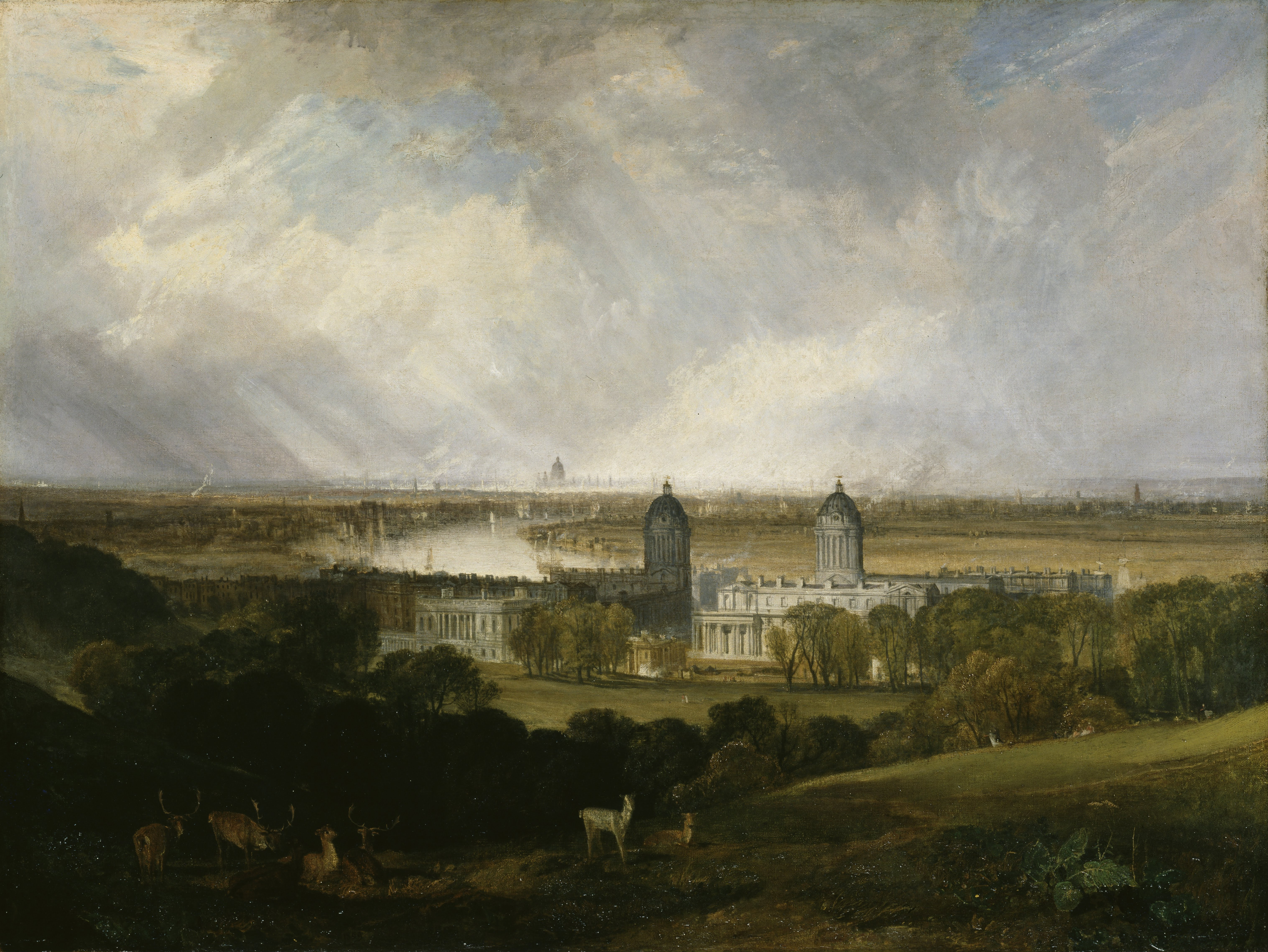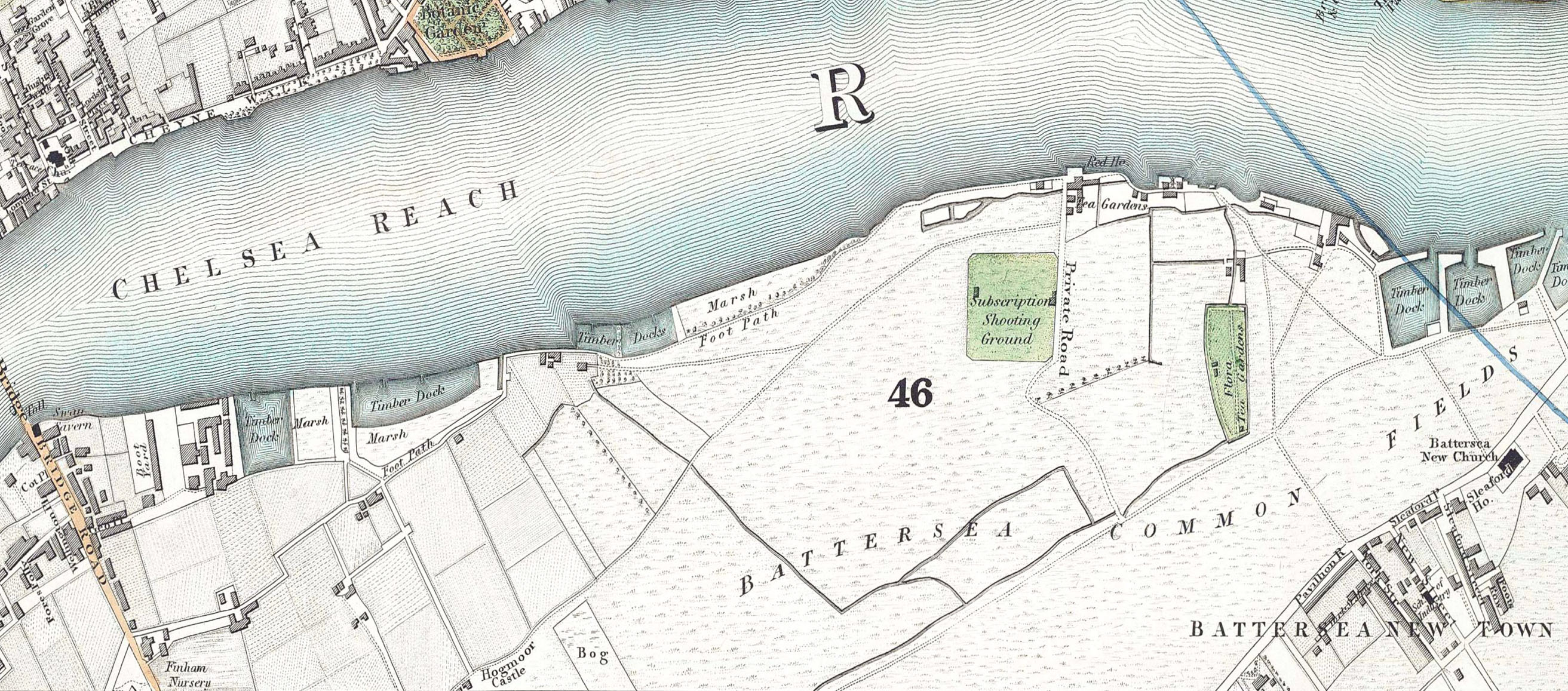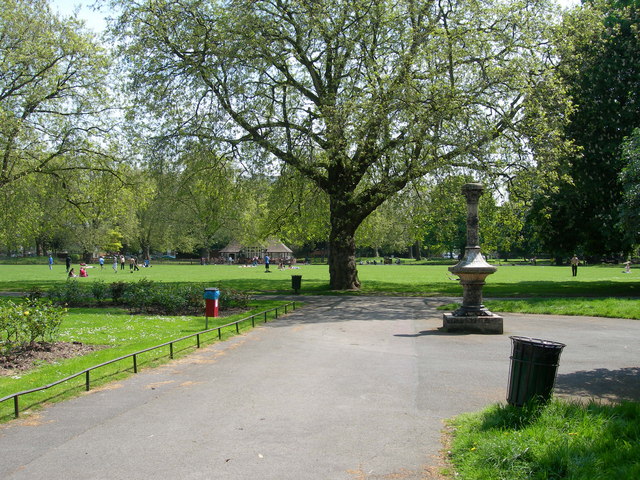|
Parks Regulation Act 1872
The Parks Regulation Act 1872 was an Act of the Parliament of the United Kingdom, covering policing and regulation of seventeen royal parks, consisting of fifteen in London and two in Scotland. It now has no outstanding effects. Its Section 2, 4 and 9 and Schedule 1 were all repealed by the Parks Regulation (Amendment) Act 1926. It was modified by the Parks Regulation (Amendment) Act 1974 (c. 29), requiring park keepers to be attested before acting as constables and renaming most of them collectively as the Royal Parks Constabulary, though the Kew Constabulary remained independent. Sections 161-162 of the Serious Organised Crime and Police Act 2005 abolished the Royal Parks Constabulary, placed the London parks under Section 2 of the 1926 Act and effectively removed any powers the Kew Constabulary had in other Royal Parks. Schedules and Sections Its "First Schedule" listed offences within the Royal Parks for which people could be arrested by the park keepers and fined a maximu ... [...More Info...] [...Related Items...] OR: [Wikipedia] [Google] [Baidu] |
Short Title
In certain jurisdictions, including the United Kingdom and other Westminster-influenced jurisdictions (such as Canada or Australia), as well as the United States and the Philippines, primary legislation has both a short title and a long title. The long title (properly, the title in some jurisdictions) is the formal title appearing at the head of a statute (such as an act of Parliament or of Congress) or other legislative instrument. The long title is intended to provide a summarised description of the purpose or scope of the instrument. Like other descriptive components of an act (such as the preamble, section headings, side notes, and short title), the long title seldom affects the operative provisions of an act, except where the operative provisions are unclear or ambiguous and the long title provides a clear statement of the legislature's intention. The short title is the formal name by which legislation may by law be cited. It contrasts with the long title which, while usuall ... [...More Info...] [...Related Items...] OR: [Wikipedia] [Google] [Baidu] |
Metropolitan Police District
The Metropolitan Police District (MPD) is the police area which is policed by the Metropolitan Police Service in London. It currently consists of the Greater London region, excluding the City of London. The Metropolitan Police District was created by the Metropolitan Police Act 1829 as an ad hoc area of administration because the built-up area of London spread at the time into many parishes and counties without an established boundary. The district expanded as the built up area grew and stretched some distance into rural land. When county police forces were set up in England, those of Essex, Hertfordshire, Kent and Surrey did not cover the parts of the counties within the MPD, while Middlesex did not have a county force. Similarly, boroughs in the MPD that elsewhere would have been entitled to their own police force did not have them. The MPD was originally defined in reference to civil parishes and in 1946 was altered to correspond to local government districts. The MPD has bee ... [...More Info...] [...Related Items...] OR: [Wikipedia] [Google] [Baidu] |
Kew Green
Kew Green is a large open space in Kew in west London. Owned by the Crown Estate, it is leased to the London Borough of Richmond upon Thames. It is roughly triangular in shape, and its open grassland, framed with broadleaf trees, extends to about thirty acres. Kew Green is overlooked by a mixture of period townhouses, historic buildings and commercial establishments. In the 1730s, Kew Green was a venue for cricket matches. History and description Most of the older houses in Kew are built round the Green and along the eastern side of the Kew Road looking towards Kew Gardens. The Green itself is a big triangular space. It is mentioned in a Parliamentary Survey of Richmond taken in 1649, and is there described as 'a piece of common or uninclosed ground called Kew Green, lying within the Township of Kew, conteyning about 20 acres.' An 18th-century view, taken from a meadow to the east, shows Kew Bridge on the right, a small irregular lake with an island to the left. A road led to the ... [...More Info...] [...Related Items...] OR: [Wikipedia] [Google] [Baidu] |
Kew Gardens
Kew Gardens is a botanical garden, botanic garden in southwest London that houses the "largest and most diverse botany, botanical and mycology, mycological collections in the world". Founded in 1840, from the exotic garden at Kew Park, its living collections include some of the 27,000 taxa curated by Royal Botanic Gardens, Kew, while the herbarium, one of the largest in the world, has over preserved plant and fungal specimens. The library contains more than 750,000 volumes, and the illustrations collection contains more than 175,000 prints and drawings of plants. It is one of London's top tourist attractions and is a World Heritage Sites, World Heritage Site. Kew Gardens, together with the botanic gardens at Wakehurst Place, Wakehurst in Sussex, are managed by the Royal Botanic Gardens, Kew, an internationally important botany, botanical research and education institution that employs over 1,100 staff and is a non-departmental public body sponsored by the Department for Envir ... [...More Info...] [...Related Items...] OR: [Wikipedia] [Google] [Baidu] |
Greenwich Park
Greenwich Park is a former hunting park in Greenwich and one of the largest single green spaces in south-east London. One of the Royal Parks of London, and the first to be enclosed (in 1433), it covers , and is part of the Greenwich World Heritage Site. It commands views over the River Thames, the Isle of Dogs and the City of London ( Simon Jenkins rated the view of the Royal Hospital with Canary Wharf in the distance as one of the top ten in England). The park is open year-round. It is listed Grade I on the Register of Historic Parks and Gardens. In 2020, it was awarded a National Lottery grant to restore its historic features, build a learning centre, enhance the park's biodiversity, and provide better access for people with disabilities. History The estate of some was originally owned by Saint Peter's Abbey, Ghent, but reverted to the Crown in 1427 and was given by Henry VI to his uncle Humphrey, Duke of Gloucester. He built a house by the river, Bella Court, an ... [...More Info...] [...Related Items...] OR: [Wikipedia] [Google] [Baidu] |
Battersea Park
Battersea Park is a 200-acre (83-hectare) green space at Battersea in the London Borough of Wandsworth in London. It is situated on the south bank of the River Thames opposite Chelsea and was opened in 1858. The park occupies marshland reclaimed from the Thames and land formerly used for market gardens. The park is Grade II* listed on the Register of Historic Parks and Gardens. History Prior to 1846, the area now covered by the park was known as Battersea fields, a popular spot for duelling. On 21 March 1829, the Duke of Wellington and the Earl of Winchilsea met on Battersea fields to settle a matter of honour. When it came time to fire, the duke aimed his duelling pistol wide and Winchilsea fired his into the air. Winchilsea later wrote the duke a groveling apology. Separated from the river by a narrow raised causeway, the fields consisted of low, fertile marshes intersected by streams and ditches with the chief crops being carrots, melons, lavender (all the way up ... [...More Info...] [...Related Items...] OR: [Wikipedia] [Google] [Baidu] |
Victoria Park, London
Victoria Park (known colloquially as Vicky Park or the People's Park) is a park in the London Borough of Tower Hamlets in East London, England. It is the largest park in Tower Hamlets and one of London's most visited green spaces with approximately 9 million visitors every year. The park spans of open space and opened to the public in 1845. Park Facilities There are two cafes in the park, The Pavilion Cafe in the west and The Hub in the east. There are two playgrounds, one on either side of the park, as well as sporting facilities and a skatepark in the east. The park is home to many historic artifacts and features and has decorative gardens and wilder natural areas as well as open grass lands. It also hosts a lawn bowls Bowls, also known as lawn bowls or lawn bowling, is a sport in which the objective is to roll biased balls so that they stop close to a smaller ball called a "jack" or "kitty". It is played on a bowling green, which may be flat (for "flat-gr ... clu ... [...More Info...] [...Related Items...] OR: [Wikipedia] [Google] [Baidu] |
Primrose Hill
Primrose Hill is a Grade II listed public park located north of Regent's Park in London, England, first opened to the public in 1842.Mills, A., ''Dictionary of London Place Names'', (2001) It was named after the natural hill in the centre of the park, the second highest natural point in the London Borough of Camden. The hill summit has a clear view of central London, as well as Hampstead and Belsize Park to the north and is adorned by an engraved quotation from William Blake. Based on the popularity of the park, the surrounding district and electoral ward were named Primrose Hill. The Primrose Hill district is in the London Borough of Camden, England. Amenities of the park include an outdoor gym known as the Hill Trim Trail, a children's playground, and toilets, all located on the south side near Primrose Hill bridge which connects to London Zoo and Regent's Park. History Like the Regent's Park, Primrose Hill was once part of a great chase appropriated by Henry VIII. ... [...More Info...] [...Related Items...] OR: [Wikipedia] [Google] [Baidu] |
Kennington Park
Kennington Park is a public park in Kennington, south London and lies between Kennington Park Road and St. Agnes Place. It was opened in 1854 on the site of what had been Kennington Common, where the Chartists gathered for their biggest "monster rally" on 10 April 1848. Soon after this demonstration the common was enclosed and, sponsored by the royal family, made into a public park. Kennington Common was a site of public executions until 1800 as well as being an area for public speaking. Some of the most illustrious orators to speak here were Methodist founders George Whitefield and John Wesley who is reputed to have attracted a crowd of 30,000. The common was one of the earliest London cricket venues and is known to have been used for top-class matches in 1724.G. B. Buckley, ''Fresh Light on 18th Century Cricket'', Cotterell, 1935. Kennington Park hosts the first inner London community cricket ground, sponsored by Surrey County Cricket Club whose home, The Oval, is clo ... [...More Info...] [...Related Items...] OR: [Wikipedia] [Google] [Baidu] |
Regent's Park
Regent's Park (officially The Regent's Park) is one of the Royal Parks of London. It occupies of high ground in north-west Inner London, administratively split between the City of Westminster and the Borough of Camden (and historically between Marylebone and Saint Pancras parishes). In addition to its large central parkland and ornamental lake, it contains various structures and organizations both public and private, generally on its periphery, including Regent's University and London Zoo. What is now Regent's Park came into possession of the Crown upon the dissolution of the monasteries in the 1500s, and was used for hunting and tenant farming. In the 1810s, the Prince Regent proposed turning it into a pleasure garden. The park was designed by John Nash and James and Decimus Burton. Its construction was financed privately by James Burton after the Crown Estate rescinded its pledge to do so, and included development on the periphery of townhouses and expensive terrace ... [...More Info...] [...Related Items...] OR: [Wikipedia] [Google] [Baidu] |
Parliament Square
Parliament Square is a square at the northwest end of the Palace of Westminster in the City of Westminster in central London. Laid out in the 19th century, it features a large open green area in the centre with trees to its west, and it contains twelve statues of statesmen and other notable individuals. As well as being one of London's main tourist attractions, it is also the place where many demonstrations and protests have been held. The square is overlooked by various official buildings: legislature to the east (in the Houses of Parliament), executive offices to the north (on Whitehall), the judiciary to the west (the Supreme Court), and the church to the south (with Westminster Abbey). Location Buildings looking upon the square include the churches Westminster Abbey and St Margaret's, Westminster, the Middlesex Guildhall which is the seat of the Supreme Court of the United Kingdom, Government Offices Great George Street serving HM Treasury and HM Revenue and Customs, ... [...More Info...] [...Related Items...] OR: [Wikipedia] [Google] [Baidu] |
Kensington Gardens
Kensington Gardens, once the private gardens of Kensington Palace, are among the Royal Parks of London. The gardens are shared by the City of Westminster and the Royal Borough of Kensington and Chelsea and sit immediately to the west of Hyde Park, in western central London. The gardens cover an area of 107 hectares (265 acres). The open spaces of Kensington Gardens, Hyde Park, Green Park, and St. James's Park together form an almost continuous "green lung" in the heart of London. Kensington Gardens are Grade I listed on the Register of Historic Parks and Gardens. Background and location Kensington Gardens are generally regarded as being the western extent of the neighbouring Hyde Park from which they were originally taken, with West Carriage Drive (The Ring) and the Serpentine Bridge forming the boundary between them. The Gardens are fenced and more formal than Hyde Park. Kensington Gardens are open only during the hours of daylight, whereas Hyde Park is open from 5 am u ... [...More Info...] [...Related Items...] OR: [Wikipedia] [Google] [Baidu] |









